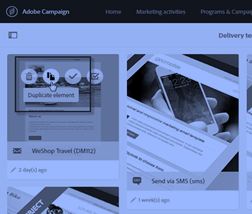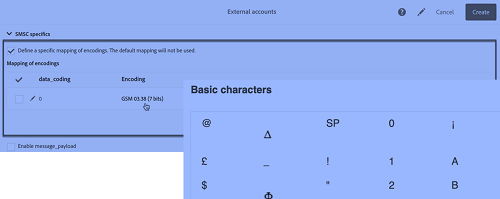Adobe Campaign Standard Checklist
After our introduction on how to build campaigns and use techniques like personalisation and dynamic content in Adobe Campaign Standard (ACS), there are more key learnings such as deliverability. Many deliverability issues are related to problems with spam checks.
The success factors can be the message’s ability to reach its destination, from a valid address, within an expected timeframe, and with quality in terms of content and format. Together, they form the foundation of a successful email deliverability program.
The checklist below ensures that you are using key steps that help you reach out to your customers faster, while using best practices.
The checklist contains 3 categories:
- Personalisation & Template
- Targeting & Deliverability
- Reporting & Optimisation
Personalisation & Template Checklist
We will explore the Personalisation & Template checklist in the first part of this series. This connects well with the previous blog posts in the ACS series. This checklist covers a range of often made and important mistakes that make their appearance throughout the personalisation process, often causing spam alerts. Most people are not aware of these issues such as creating customised templates for all campaigns, and how characters impact SMS counts.
When templates are standardised and personalised at the same time, it can help save time and standardise the delivery process. Using pre-configured parameters, we are about to deep dive into the details. A delivery template only needs to be set up once and can be re-used indefinitely after that. The reason for setting up templates, can include having different work functions, teams or brands.
1. Create a new template by using duplicate a native template and alter its properties for these marketing activities. To effectively manage brands, having a single delivery template per sub-domain helps avoid mistakes and saves you time. For example, Purple Square could have au.purplesquareconsulting.com, @uk.purplesquareconsulting.com, etc.
Ready-made templates improve efficiency for campaign building. It can be pre-configured, managed, and simplified for various groups of users. You can reuse pre-configured delivery templates with both technical and functional properties, including HTML content, audience, test profiles, scheduler, etc.
2. Validate sender & reply to address: The address for deliveries and replies must explicitly identify the sender. The domain must be owned by and registered to the sender. This setting is available in the advanced parameters section of an email template’s properties, the from (email address) field corresponds to the sender’s address.
The address domain must be the same as the sub-domain that you delegated to Adobe. The Reply to address is best set to a brand’s existing customer care email, so they can handle customer replies easily and instantly.
To increase the open rate, use a name that is easily identifiable like the brand’s name or a trusted person’s name. Similar concepts apply for the SMS channel, the from option allows you to personalise the name of sender using a string which will appear as the sender’s name of the SMS message. If this field is empty, then it will be the source number provided in the external account that will be used. If no source number is provided, it will be the short code that will be used.
3. Linking a brand to a template with a sub-domain per brand when you manage several brands. Having one delivery template per sub-domain enables you to personalise pre-configured parameters for each of your brands. The parameters of sent emails related to a brand’s identity (such as the brand logo or the sender address) are centrally managed. You can create one or several brands and link them to delivery templates.
To display or change the brand assigned to a delivery template, select the template’s Edit properties button and navigate to the brand’s detail.
4. Personalisation, formatting and images errors are common issues for delivery execution. A template should use a simple design with email-safe fonts; formatting is adaptive to all devices and encoded special characters; continue optimising subject line by using A/B test or test subject line functionality to improve open rates. Use data in the database for personalisation and dynamic content. A default variant must be defined. Preview all variants with a test profile. Check formatting is correct. Preview your message to check its personalisation and how your recipients will see your delivery. Areas of personalisation limitation:
- Subject: 50 characters max and NO capital letters, Spammy word or special characters.
- Mirror page: mandatory at the top.
- Un-subscription: visible and valid, and in functional form. Use proof check.
- Pre-header: can enhance the UX and significantly improve the open rate.
- Image quality:
- Avoid image-based emails. It can get marked as spam or be blocked.
- Balance your content with image and text. contained in an image, use alt and title text to make sure your message gets across. Style your alt/title text to improve its appearance.
- Avoid background images
- Make images responsive and resizable
- Images and public resources linked to campaigns must be present on an externally accessible server.
- Previewing & Proofs
- Check delivery layout on different devices by select a type of device in the top action bar.
- For emails, an automatic anti-spam checking is performed during each preview by click the Show anti-spam analysis button to find out more about the warning.
- To test your delivery, use proofs before sending to the main target. Make sure you select appropriate proof recipients, because they validate the format and the content of the message. Test profiles are used to target recipients who do not match the defined target criteria in order to test a delivery before sending to the main target.
5. Content size and formatting:
- Responsive email HTML (no Web HTML) renders optimally for target device (Preview and proofs to test)
- Maximum size of email is about 35KB for better performance and deliverability. Message size is at the top right when the test profile is generated, then remove redundant or unused styles or move content to a landing page to minimise it.
- SMS length number of characters in an SMS meets the GSM standards. SMS messages using GSM encoding are limited to 160 characters, or 153 characters per SMS for messages sent in multiple parts.
- Transliteration consists of replacing one character of an SMS by another when that character is not taken into account by the GSM standard. Personalisation fields may introduce characters that are not taken into account by the GSM encoding. You can authorize character transliteration by checking the corresponding box in the SMPP channel settings tab of the corresponding External account.
- To keep all of the characters in your SMS messages as they are, to not alter proper names for example, do not enable transliteration. However, if your SMS messages contain a lot of characters that are not taken into account by the GSM standard, enable transliteration to limit the costs of sending your messages.
This guideline should be helpful for any Adobe Campaign Standard users, to use this as a critical checkpoint as part of their internal a checklist for any outgoing campaign.
You can find more useful links and related topics here.
Like what you see?
Subscribe to our newsletter for customer experience thought leadership and marketing tips and tricks.








